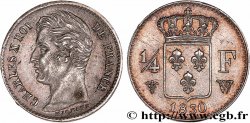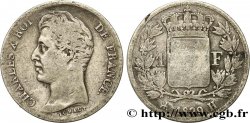fme_692189 - CHARLES X Médaille, Visite de la Monnaie Royale des Médailles par Léopold Jean de Bourbon
Not available.
Item sold on our e-shop (2023)
Price : 80.00 €
Item sold on our e-shop (2023)
Price : 80.00 €
Type : Médaille, Visite de la Monnaie Royale des Médailles par Léopold Jean de Bourbon
Date: 1825
Mint name / Town : France et Angleterre
Metal : bronze
Diameter : 40,5 mm
Orientation dies : 12 h.
Engraver BARRE / DE PUYMAURIN D.
Weight : 37,8 g.
Edge : lisse
Puncheon : sans poinçon
Coments on the condition:
Patine hétérogène. Traces de manipulation, quelques rayures
Obverse
Obverse legend : LEOPOLD JEAN / PRINCE DE SALERNE.
Obverse description : Portrait à gauche du prince de Salerne.
Reverse
Reverse legend : S.A.R. LE PRINCE DE SALERNE VISITE LA MONNAIE RLE DES MÉDAILLES // 22 JUILLET 1825.
Reverse description : Allégorie de la monnaie et de la frappe de monnaie.
Commentary
Léopold Jean Joseph Michel de Bourbon, prince de Naples et de Sicile puis des Deux-Siciles, prince de Salerne (1790-1851), est le quinzième enfant du roi Ferdinand Ier des Deux-Siciles et de son épouse Marie-Caroline d'Autriche.








 Report a mistake
Report a mistake Print the page
Print the page Share my selection
Share my selection Ask a question
Ask a question Consign / sell
Consign / sell
 Full data
Full data



